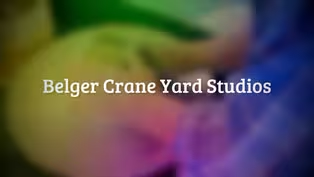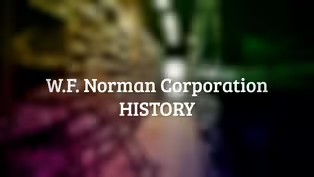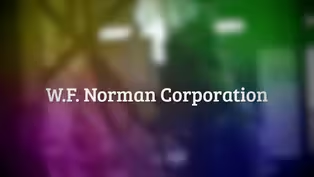
Belger Crane Yard Studios How-To
Clip: Season 3 Episode 1 | 6m 1sVideo has Closed Captions
How-To segment @ Belger Crane Yard Studios
Host, Matt Burchett, learns how to throw on a potter’s wheel with Gina Pisto, Artist in Residence.
Problems playing video? | Closed Captioning Feedback
Problems playing video? | Closed Captioning Feedback
Making is a local public television program presented by KMOS

Belger Crane Yard Studios How-To
Clip: Season 3 Episode 1 | 6m 1sVideo has Closed Captions
Host, Matt Burchett, learns how to throw on a potter’s wheel with Gina Pisto, Artist in Residence.
Problems playing video? | Closed Captioning Feedback
How to Watch Making
Making is available to stream on pbs.org and the free PBS App, available on iPhone, Apple TV, Android TV, Android smartphones, Amazon Fire TV, Amazon Fire Tablet, Roku, Samsung Smart TV, and Vizio.
Providing Support for PBS.org
Learn Moreabout PBS online sponsorship- This may be the greatest thing I have ever made.
(Matt laughing) And we're back here at Belger Ceramic Studio and I'm here with Gina.
And Gina, are you a potter or a ceramicist?
What is your job here exactly?
- I'm an artist in residence here.
I'm a ceramicist.
I wouldn't consider myself a potter so much, but I do know - [Matt] Okay.
- I do know what I'm doing on the wheel.
- Okay, well I'm sure there are fine details between the one and the other, but to the lay person, I guess they all kind of fall under one umbrella of ceramics and pottery, I guess to use to use the terms interchangeably.
- Yeah, we all use dirt, you know?
- Okay.
That's fair.
Alright, well what do we have planned for today?
- All right, so I'm gonna show you how to throw a cylinder.
So I have some clay wedged up and balled up here, and I'm gonna kind of walk you through start to finish how to do this.
- Okay.
- So I'm gonna take my ball of clay.
It's already wedged so there's no air pockets or anything in it.
- Okay.
- And I'm gonna start by just putting a little bit of water down at the center of of the wheel head, and I'm gonna smack it down.
This is my center point.
I'm gonna smack it down as close to center as possible.
- [Matt] 'Cause otherwise it's gonna pull it - [Gina] Pretty good.
- [Matt] One direction or another?
- Or else it's gonna pull it, but this is gonna be the first part of this process, is centering, which there's essentially sort of like two movements that you're doing with your hands.
You're right-handed like I am.
So your left hand is gonna be pushing and then your right hand is going to be sort of pressing down.
We're doing that as the wheel head is gonna be spinning, so that way the clay has nowhere to go but the middle.
So then it'll be centered.
- [Matt] Okay.
- And the next thing that we're gonna do, is we're going to open, so that's where we're making our first kind of entrance into the clay, so we can pull a wall.
To do that, I'm gonna again get some water and this is my center point right here.
And I'm going to kind of slowly start to press down.
When I feel it getting a little bit dry, I just add a little bit more water there.
- Feel a pretty marked difference.
- Yeah, you feel a lot more friction and tension against the clay, when you don't have the water to add some slide to it.
I'm pressing down and I'm probably leaving, I would say, about this much space if you can see.
- [Matt] Okay.
- [Gina] Kind of where I'm pressing down to.
I'm leaving about an inch at the bottom.
I'm not going all the way down to the wheel head.
All right, so now I've kind of done my first enter and then the next motion that I'm gonna do, is with my hands in this hole that I've made, I'm going to kind of curl my fingers back and up.
- [Matt] Okay.
- And that'll be essentially my first pull, so.
- And you're not putting any pressure on the outside at this point?
- No pressure on the outside and I'm curling my fingers.
And then moving up a little bit.
So you can kind of see, this is opened a little bit wider and there's almost like this little lip or this little edge right here, with a bit more clay up here at the top.
The next thing that I'm gonna do is I'm going to compress this top rim.
I'm gonna get some water and I'm gonna kind of press with these two fingers, my thumb and my middle finger, and then the thumb on my right hand is gonna press down a little bit just to compress that rim.
And I'm gonna do this same motion throughout the process while I'm throwing right now, to make sure that every time I'm putting stress on the clay, I'm continuing to compress it to make sure it's really tight and it doesn't try to fall apart on me.
- Okay.
- And I think we'll probably call that good.
So I'm gonna show you how I kind of will finish this off on the wheel head before removing it, and then you'll give it a try, if you feel ready and I'll help you.
- [Matt] So now, this shape here, that's kind of the building block for a lot of different things that you do on the wheel.
I mean this is, - Exactly.
- You've gotta get to this point before you can get crazy with it.
- Yep.
Yep.
A cylinder is really the foundational form for everything that you make on the wheel.
Even plates, bowls, everything starts from a cylinder.
When I was in undergrad and I took my first wheel throwing class, I think our first day, we made 18 cylinders.
And for people who had never thrown anything on the wheel, it was a real disaster.
But, - Stuff flying all over the place.
- It's the foundational knowledge, that is what allows you to be able to make all those other forms.
So we have switched positions, so now Matt is gonna give it a shot and throw a cylinder on the wheel.
- All right.
- [Gina] So you'll wanna use some power.
Yep.
I'm making an ashtray more than a cylinder.
That's what we were after, I'm sure.
- May end up a little bit more avant garde than I was looking for.
- Avant garde is good.
It's art, right?
- [Gina] Oh!
- Did we save it?
We might've saved it.
It's beautiful.
It's beautiful.
- Good job!
- Thank you so much.
- You're welcome.
- For showing me all of this.
- This was a lot of fun.
This may be the greatest thing I have ever made.
(Matt laughing)
Video has Closed Captions
Clip: S3 Ep1 | 6m 21s | Belger Crane Yard Studios – Ceramics studio and Gallery in Kansas City, MO (6m 21s)
W.F. Norman Corporation History
Video has Closed Captions
Clip: S3 Ep1 | 5m 11s | W.F. Norman Corporation – Nevada, MO (5m 11s)
W.F. Norman Corporation Process
Video has Closed Captions
Clip: S3 Ep1 | 5m 50s | W.F. Norman Corporation – Nevada, MO (5m 50s)
Providing Support for PBS.org
Learn Moreabout PBS online sponsorshipSupport for PBS provided by:
Making is a local public television program presented by KMOS
















